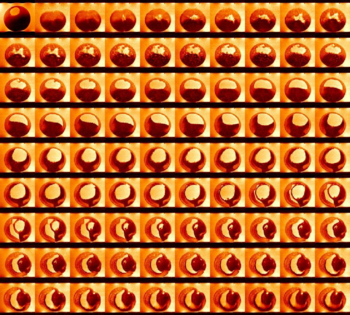Biophysics
 From Citizendium - Reading time: 2 min
From Citizendium - Reading time: 2 min

Biophysics is a branch of science concerned with the experimental and theoretical study of biological systems using the background and concepts of physics. This means that most of the methods used in biophysical research also originate from those fields. Nevertheless, biophysics has in its many subfields developed its own theories and highly specialized techniques, which form the core of the curriculum in any institute teaching it.
The term "biophysics" is often also used loosely in neighbouring biological sciences (as in biochemistry) to describe some quantitative aspect of a biological phenomenon, such as the "biophysics of proteins" (meaning how physical laws define their structure or changes thereof) or "of cell membranes" (meaning electrical signalling phenomena and mathematics of the factors creating it).
History[edit]
The origins of biophysics[1] can be traced to the efforts of physiologists to use physical concepts, such as electricity[2], thermodynamics[3], optics[4], or mechanics (hydrodynamics and aerodynamics)[5][6].
Scope[edit]
Biophysics is closely related to the disciplines of Mathematical and Computational biology, Nanobiotechnology, Bioinformatics, Biochemistry and Bionics; a clear boundary between these disciplines and biophysics does not exist. The origins of Molecular biology can be traced to the efforts of physicists and physical chemists to explain the physical (molecular) basis of Genetics[7].
Research themes in biophysics encompass all major characteristics of life, namely homeostasis, compositionality, metabolism, growth, adaptation, irritability and reproduction. Hence, they cover all levels of biological organization, from the atomic and molecular level via cells, organs and tissues to individual organisms, populations, species, ecosystems, the biosphere, and astrobiology. Methodologically, biophysics employs a wide range of experimental and theoretical techniques from neighbouring scientific disciplines; choosing the techniques applicable to the scale of interest and adapting them to provide the necessary increase in precision and the ability to deal with the increased complexity of biological systems, to ensure that they are compatible with the biological objects under study. In addition to the development and application of sophisticated instruments for experimental measurements on human and other biological systems, modern biophysicists make extensive use of computational facilities to calculate molecular structures and interactions, and to calculate the content, transmission and transformations of matter, energy and information in biosystems, e.g., to simulate physiological functions of cardiac or neural cells, or to decipher the relationship between brain and mind.
References[edit]
- ↑ C. Sybesma. Biophysics, an introduction. Springer 1989.
- ↑ Galvani's experiments with frog muscle.
- ↑ J. Mayer's proposition that photosynthesis is an energy conversion process
- ↑ Ludvig von Helmholtz's work on opthalmometry
- ↑ J.C.Bose work on plants
- ↑ Leonardo da Vinci. Codex on the Flight of Birds
- ↑ Watson and Crick's model of DNA
 KSF
KSF